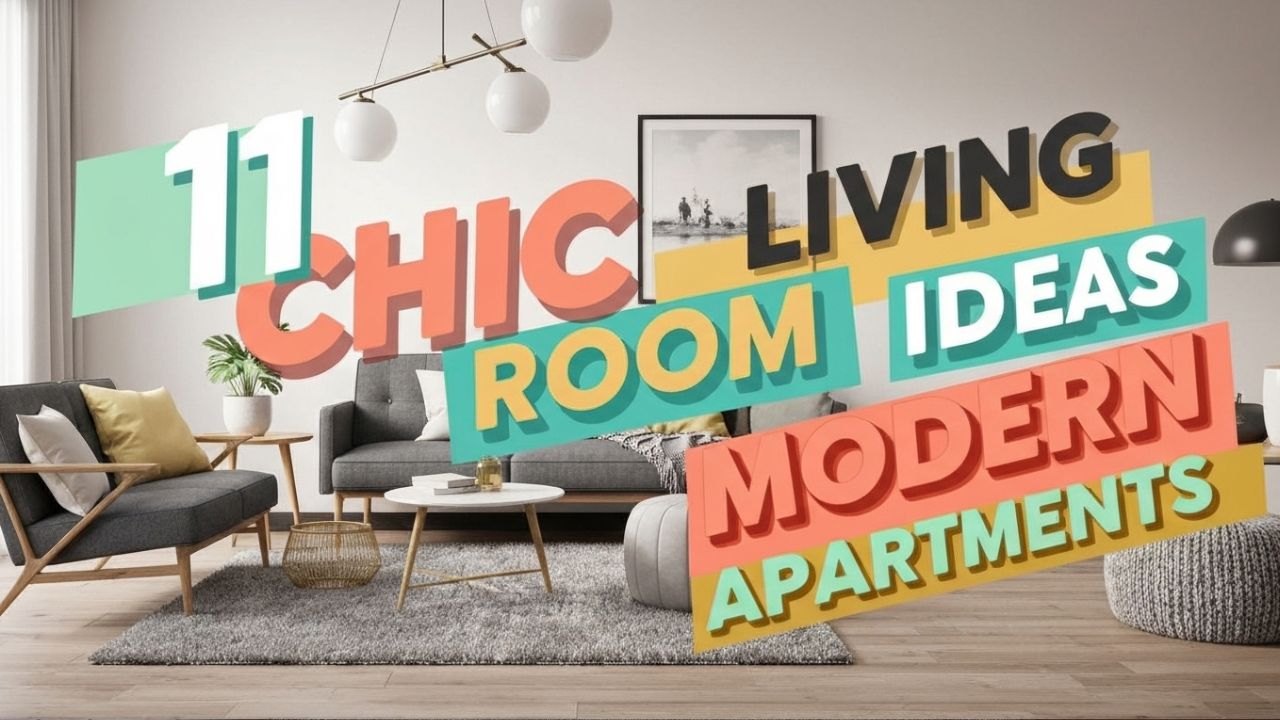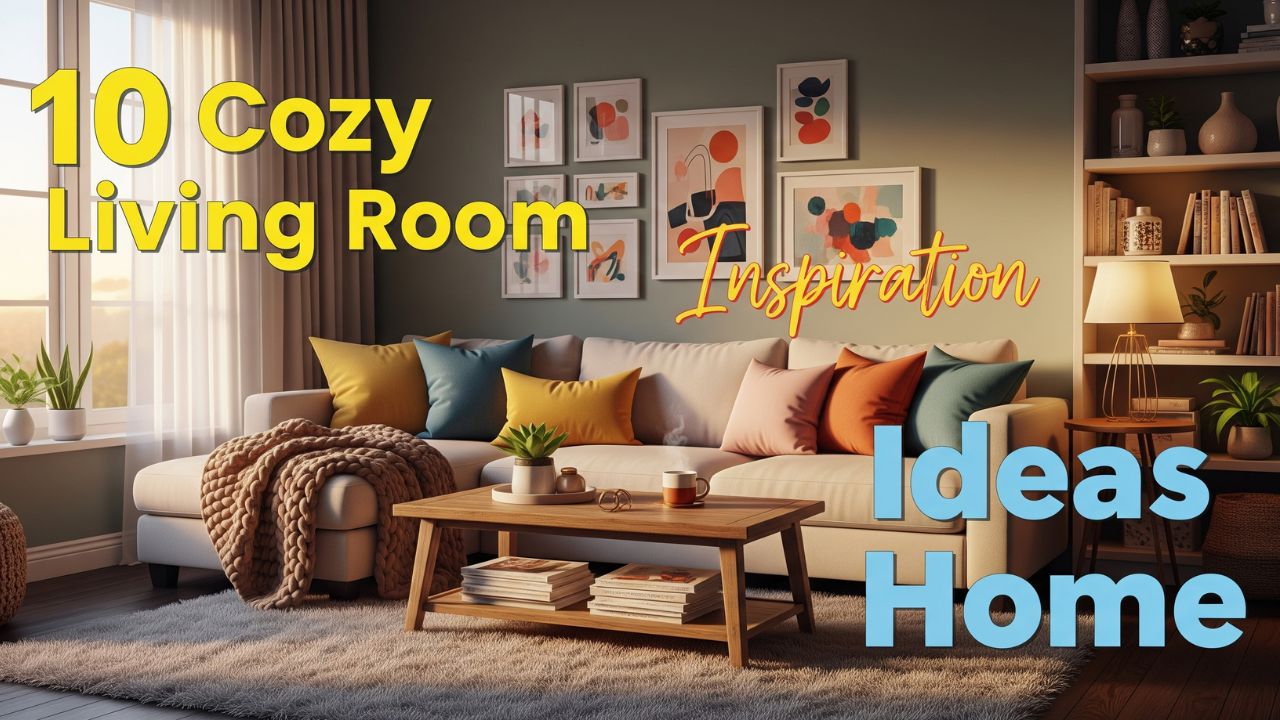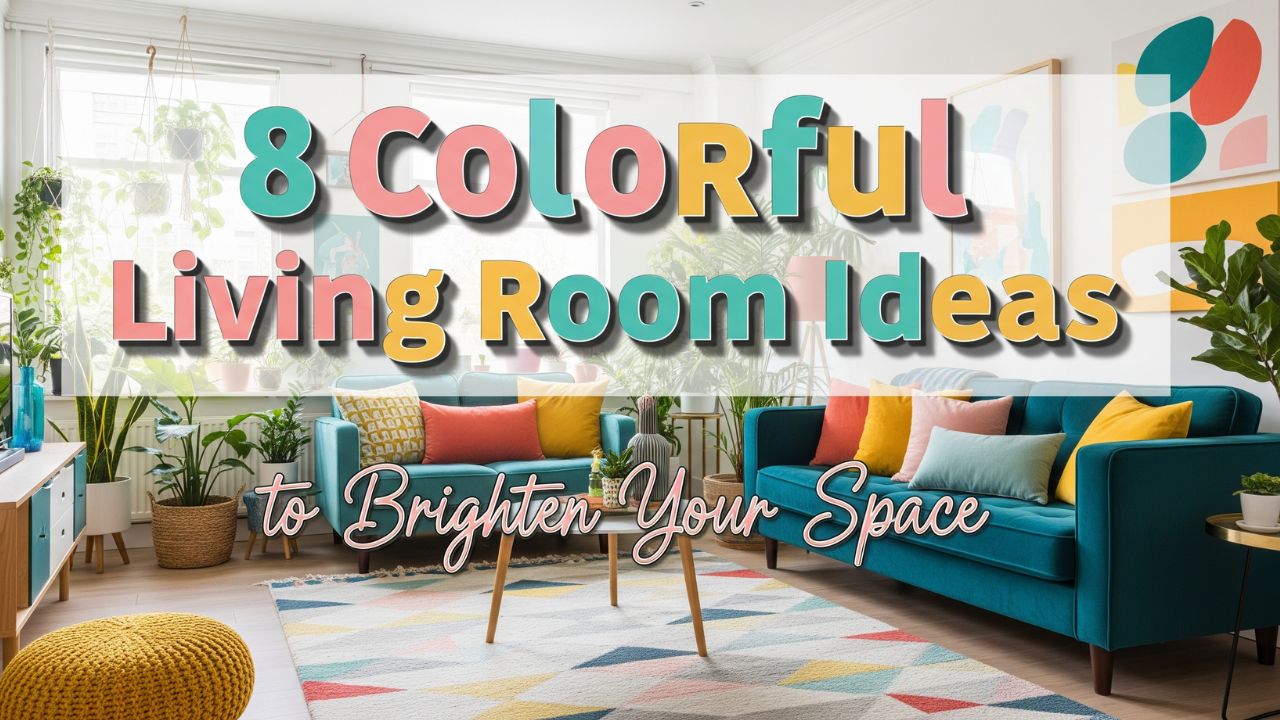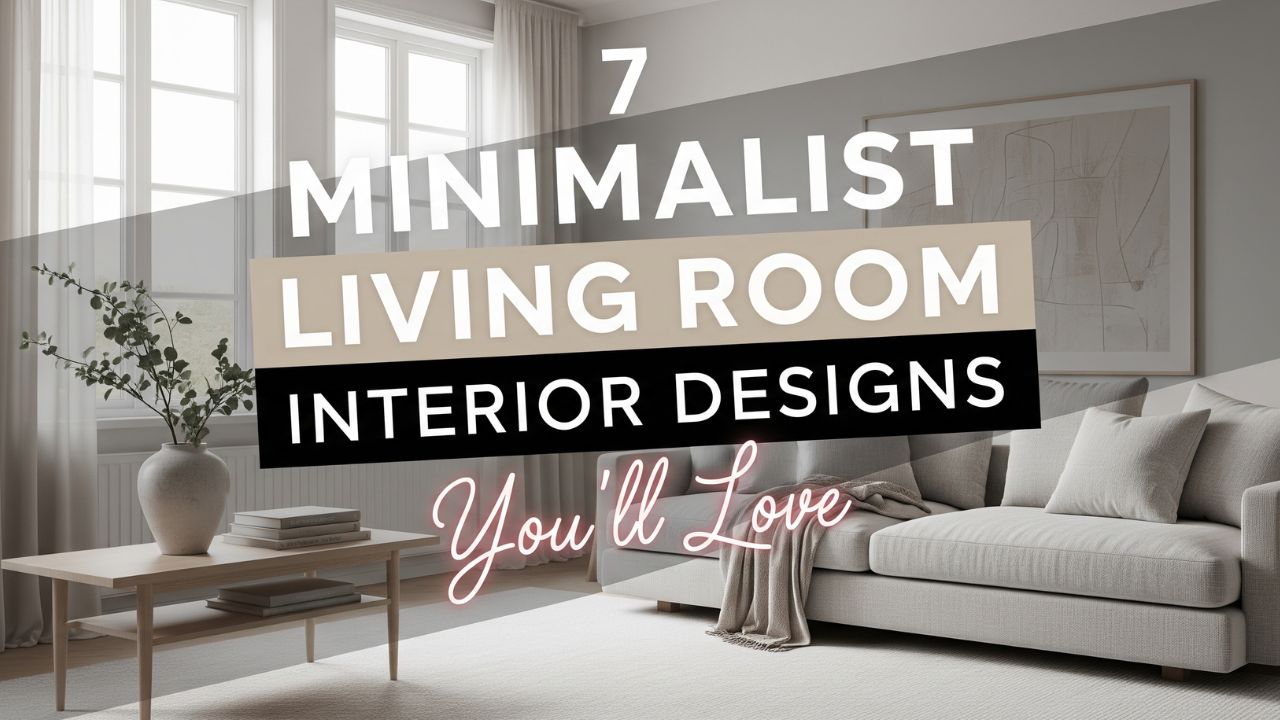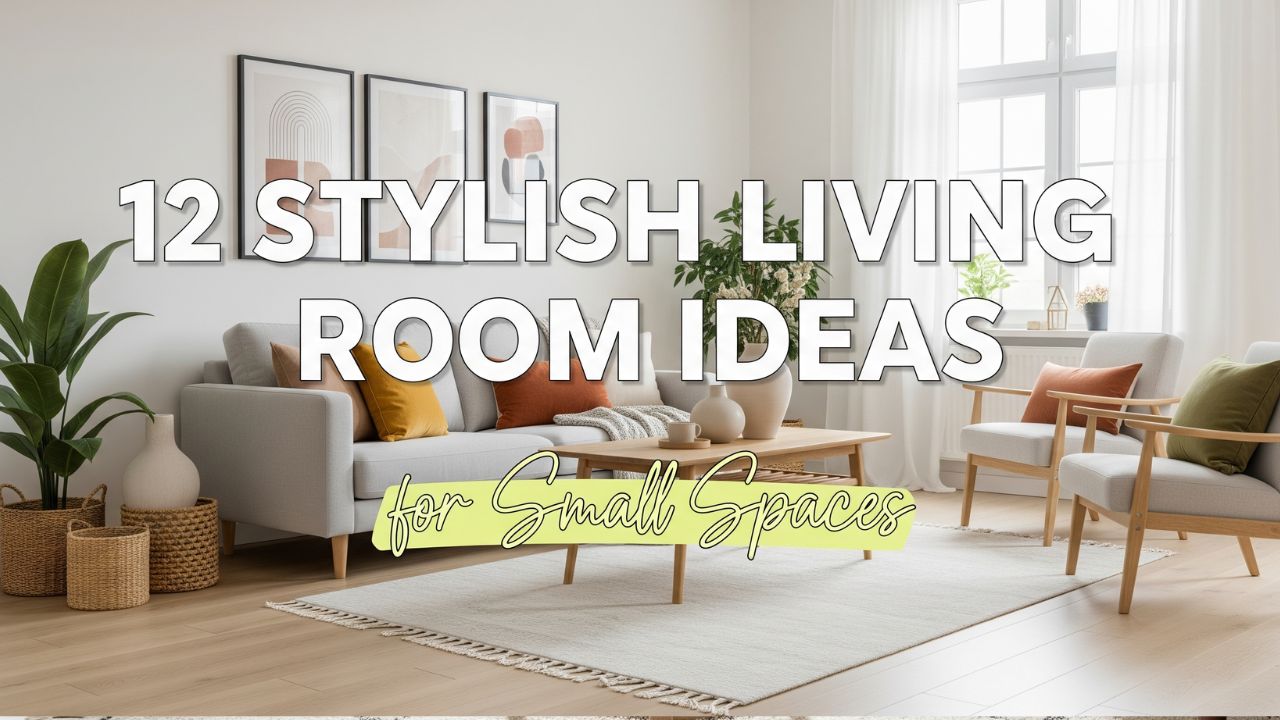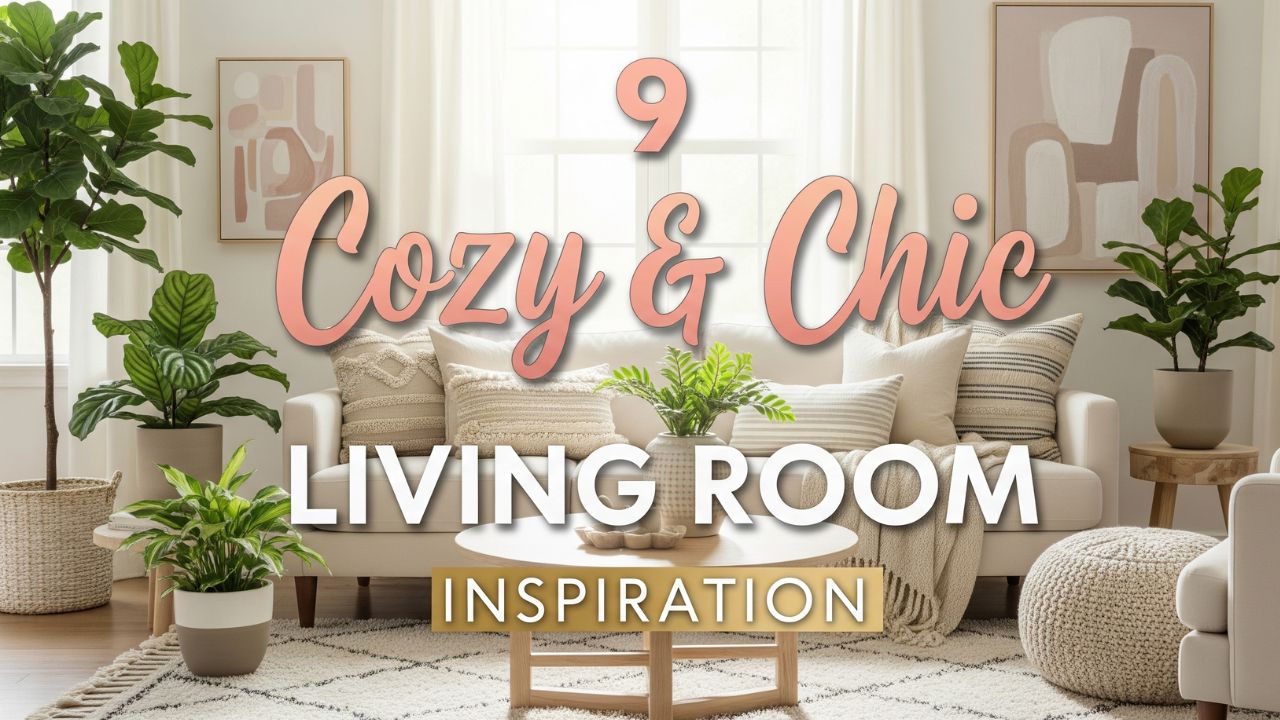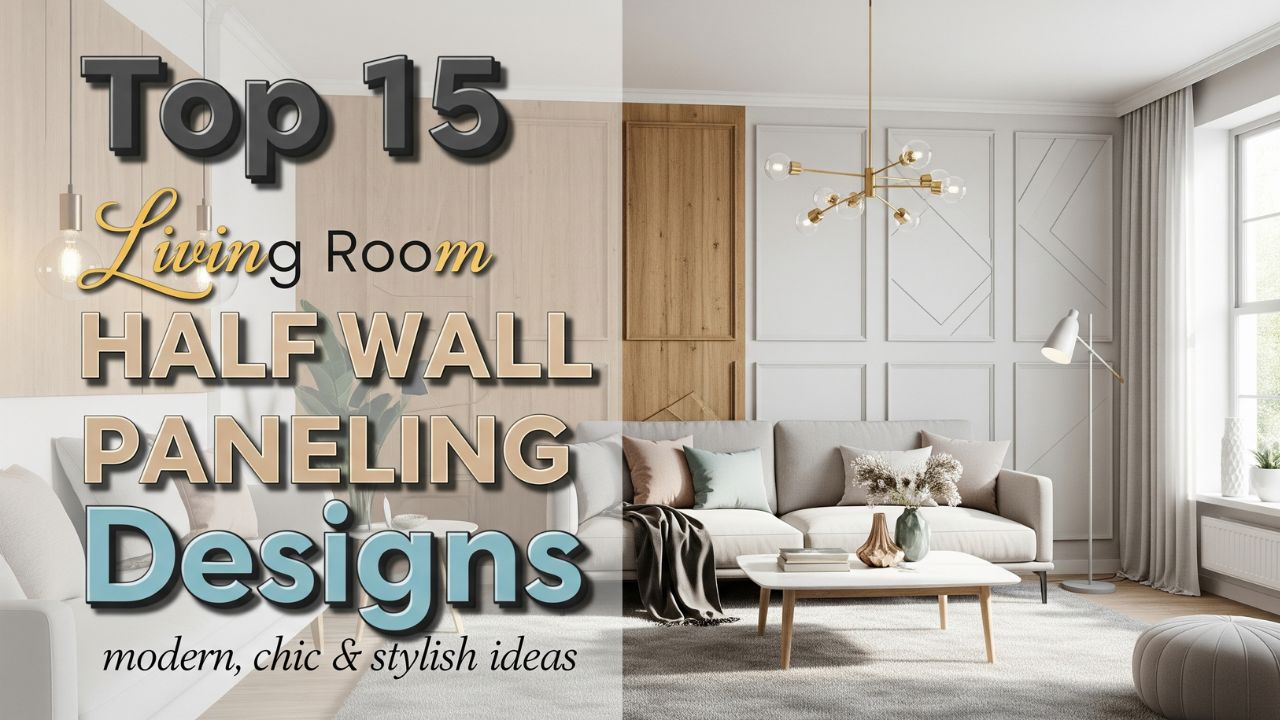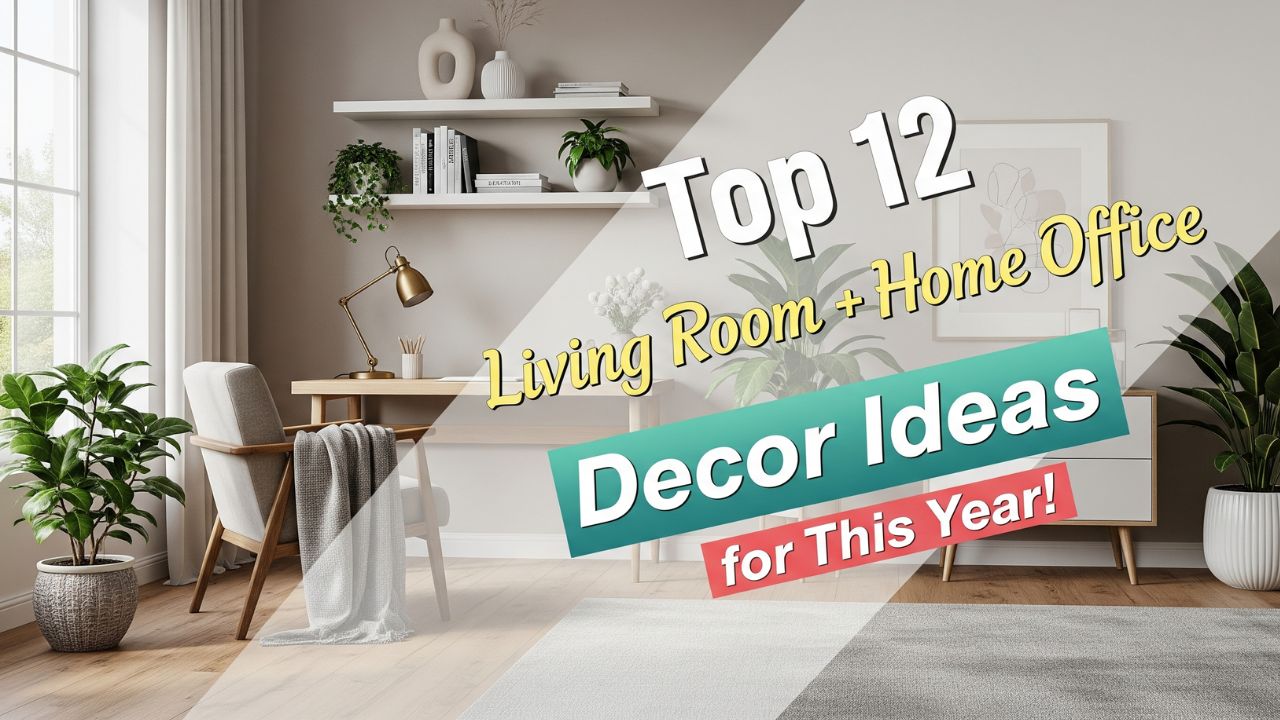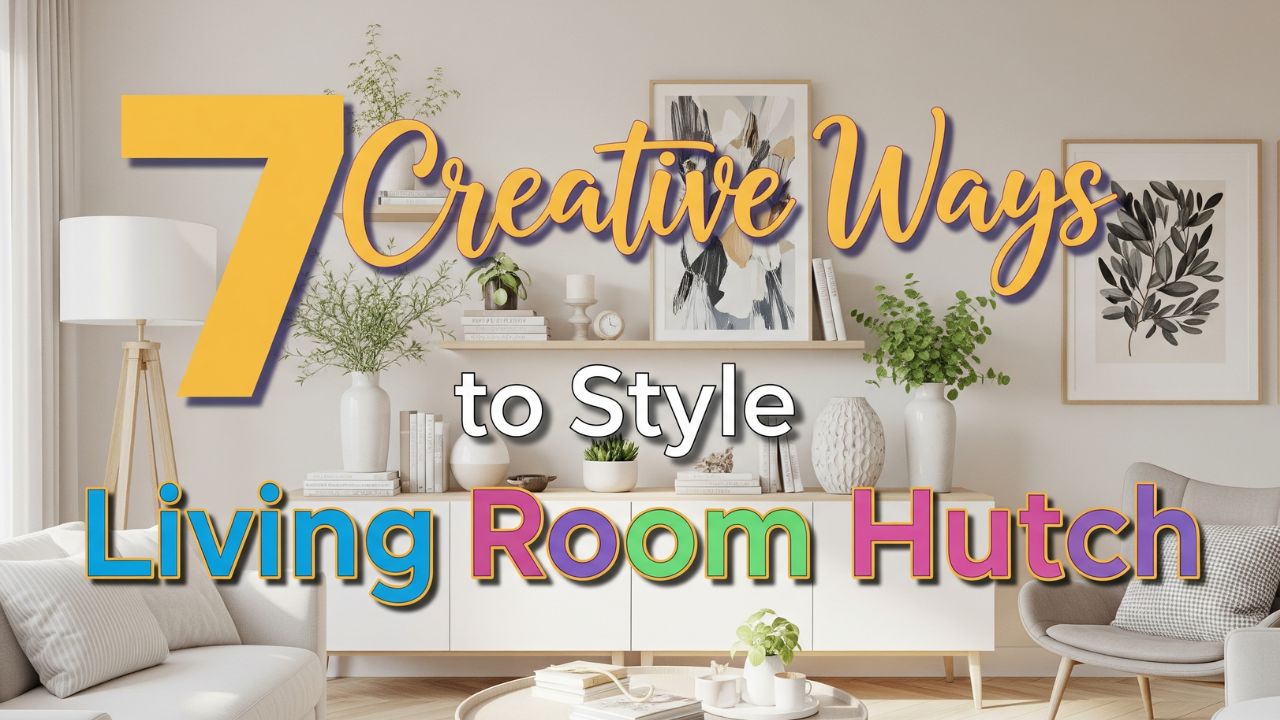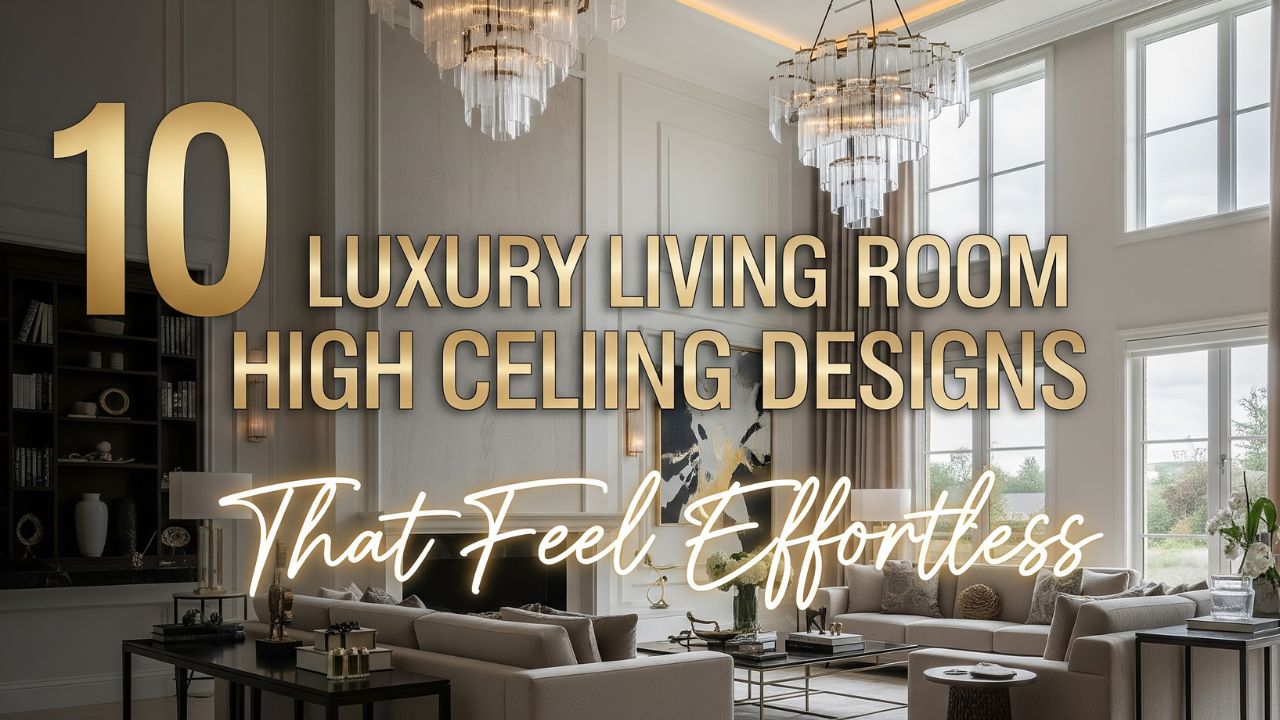When it comes to decorating your living room, one of the most captivating ways to showcase your style is through a gallery wall. A gallery wall, filled with art, photos, and other decorative elements, creates an instant focal point in any space.
But with so many options available, how do you choose the perfect gallery wall layout for your living room? Whether you prefer a modern, minimalist design or a more eclectic, boho vibe, we’ve got the answers.
In this post, we’ll explore 15 creative gallery wall layouts that are sure to inspire you. From grid-style arrangements to organic and asymmetrical designs, there’s something for every taste and every room. So, let’s dive into the world of gallery walls!
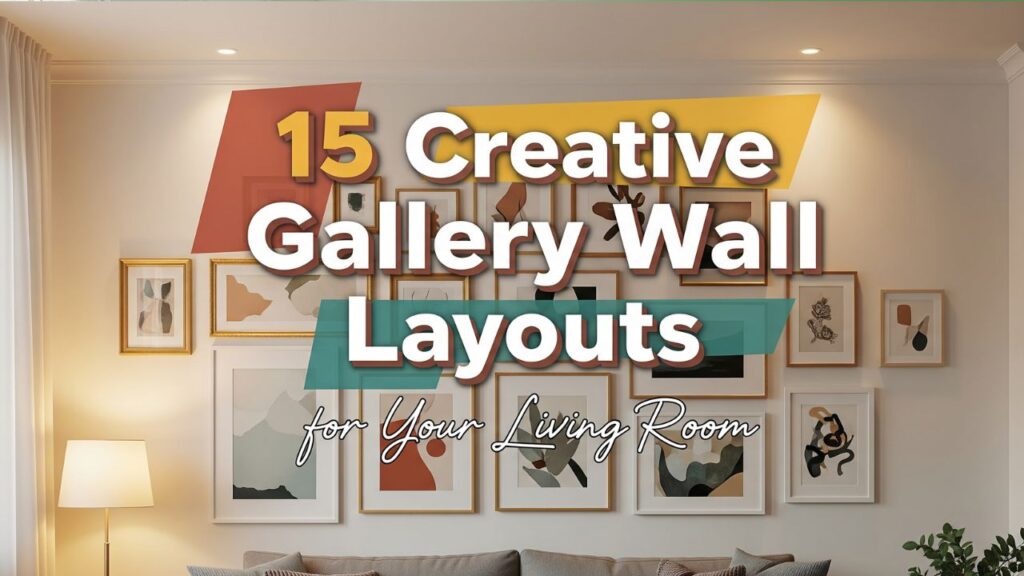
Table of Contents
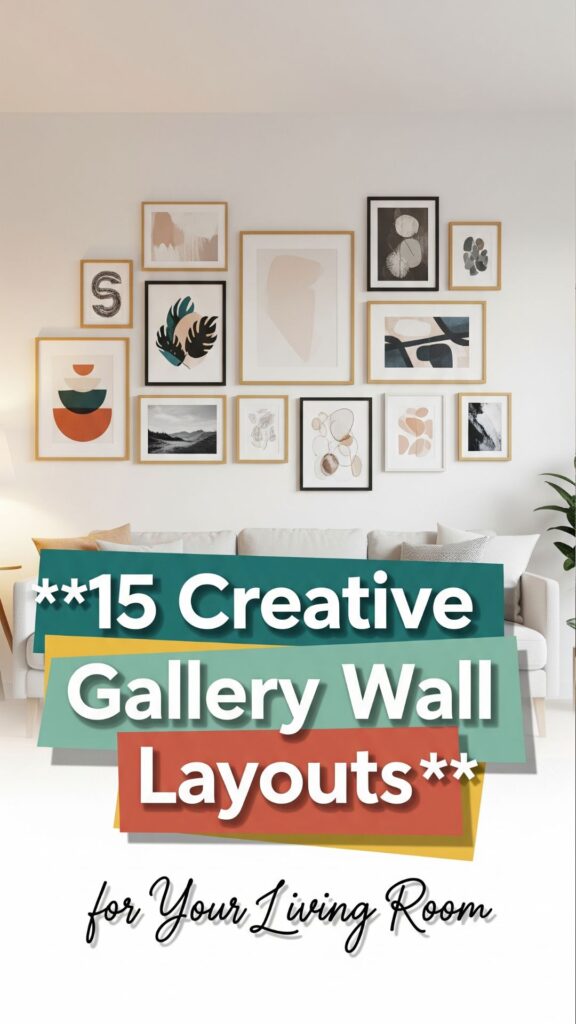
15 Creative Gallery Wall Layouts
1. The Grid Layout: Structured Simplicity
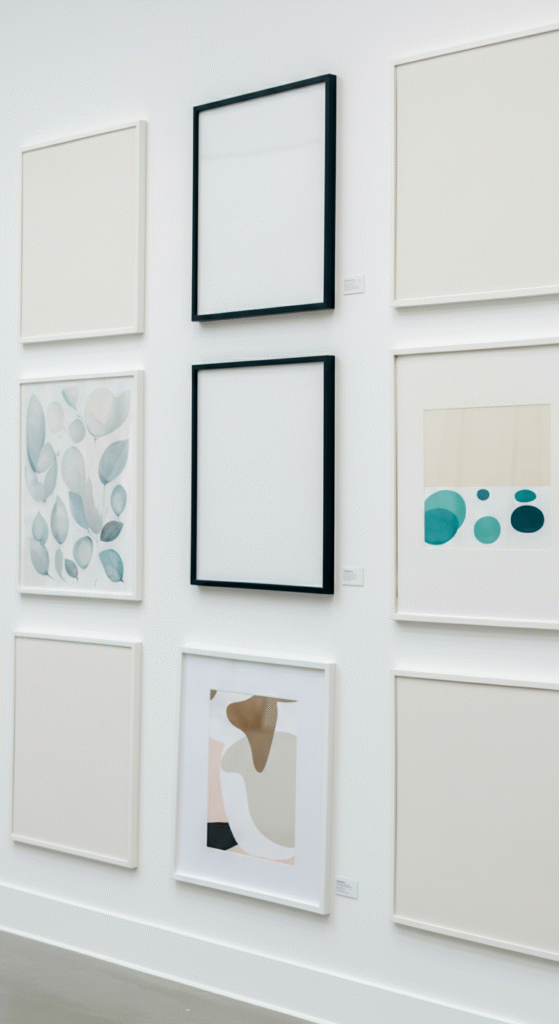
If you’re someone who loves symmetry and balance, the grid layout might be the perfect choice for your living room gallery wall. This layout involves arranging your artwork in a neat, grid-like pattern with equal spacing between each piece.
A grid layout provides a modern and sleek appearance, offering a clean, organized look to your living room. You can use identical frames or mix and match different sizes for a subtle contrast. This arrangement works beautifully above a sofa, mantelpiece, or even along an entire wall.
2. The Salon Style Layout: A Classic Touch

Do you love the look of vintage galleries or art museums? The salon-style layout mimics the traditional approach of displaying artwork in close proximity, creating an engaging and visually rich environment.
In this layout, artwork is arranged in an organic, overlapping fashion, with varying frame sizes, styles, and orientations. The key to success with this style is to keep the arrangement well-balanced, ensuring that the artwork doesn’t look too crowded.
3. The Linear Layout: Straightforward and Elegant
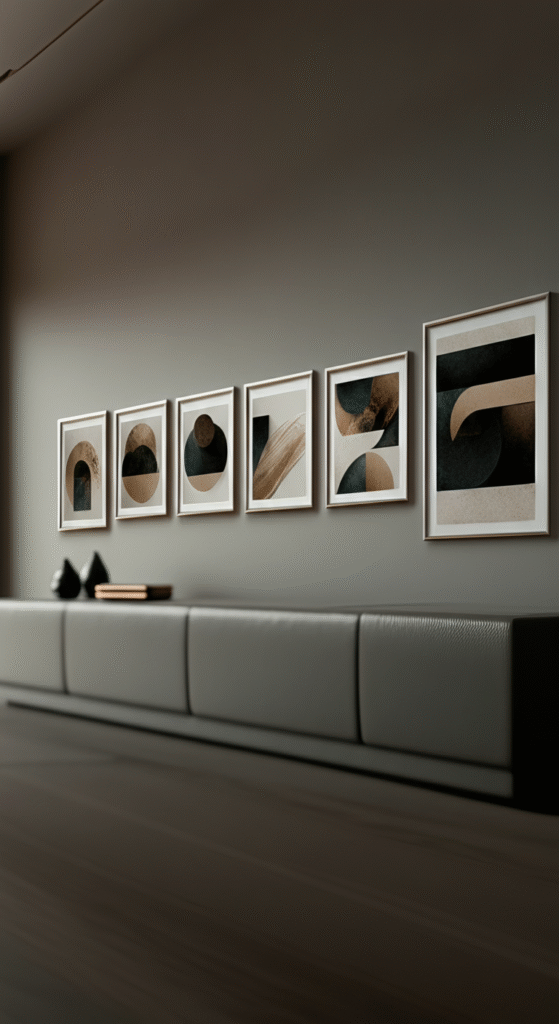
A linear gallery wall is perfect for those who appreciate minimalism and clean lines. This layout involves hanging your artwork in a single row, either horizontally or vertically. The linear arrangement can work well above a console table, a long bench, or on a narrow wall.
What makes this layout so appealing is its simplicity and subtle elegance. It’s a fantastic choice if you’re looking for a streamlined, modern aesthetic.
4. The Asymmetrical Layout: Bold and Dynamic
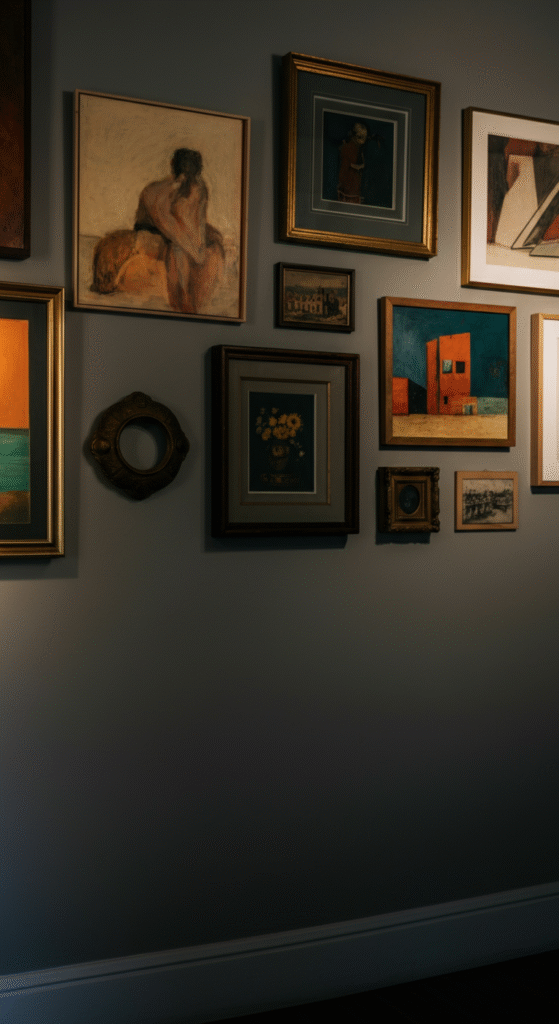
If you want to break free from traditional designs, the asymmetrical layout offers a bold and dynamic approach. This layout involves arranging artwork in an off-center, irregular way, creating a sense of movement and flow in your living room.
With this layout, you can mix different sizes and shapes, while avoiding perfectly aligned edges. Asymmetry in design creates an energetic and modern atmosphere, perfect for spaces with an artistic or contemporary flair.
5. The Floating Layout: Effortless and Open
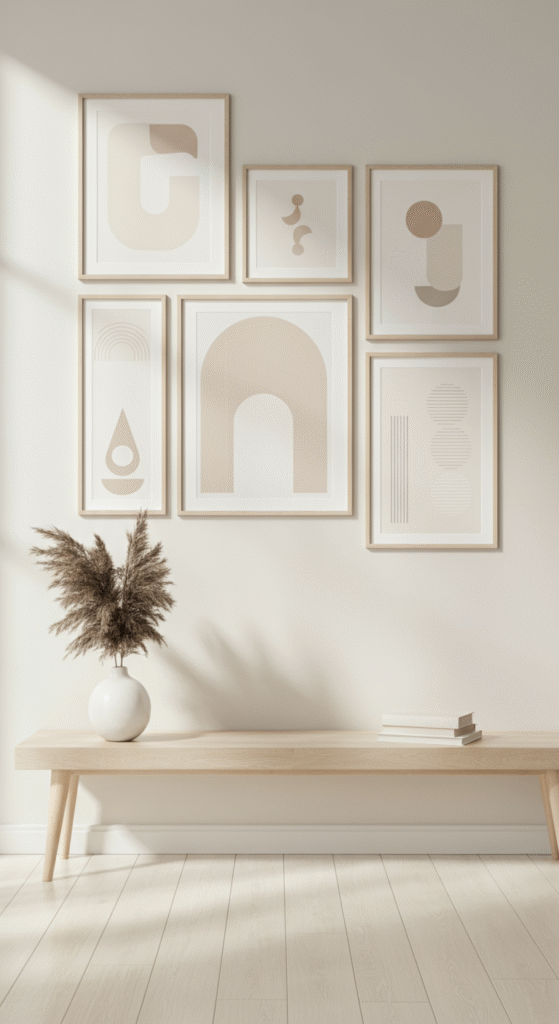
The floating layout is ideal for a more casual and airy approach. Instead of placing frames directly on the wall, this arrangement involves allowing space between each piece, giving the effect of “floating” artwork.
This layout works particularly well in smaller living rooms or spaces that need to feel open and uncluttered. The floating design offers a more relaxed look and can be tailored to fit any room size or wall shape.
6. The Centerpiece Layout: Focus on One Standout Piece

Sometimes, less is more. If you have a favorite artwork or a striking piece that you want to highlight, the centerpiece layout might be exactly what you need. In this arrangement, you place a larger piece in the center of the wall, with smaller artworks surrounding it in a way that complements the main focal point.
This design strategy draws attention to the centerpiece, creating a sophisticated and impactful visual display.
7. The Grid and Linear Hybrid Layout: Best of Both Worlds
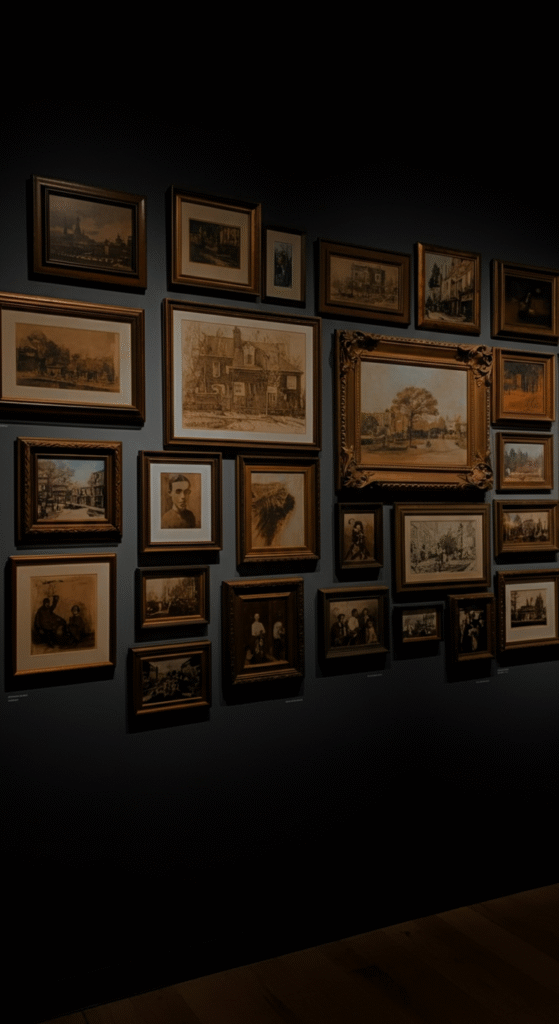
Can’t decide between a grid or linear layout? Why not combine the two? The hybrid grid and linear layout combines the clean lines of a grid with the simplicity of a linear arrangement.
This layout works best with a few large, statement pieces placed at the center and smaller, evenly spaced works surrounding them. It offers structure while maintaining a sense of creativity and balance.
8. The Organic Layout: Natural and Free-flowing
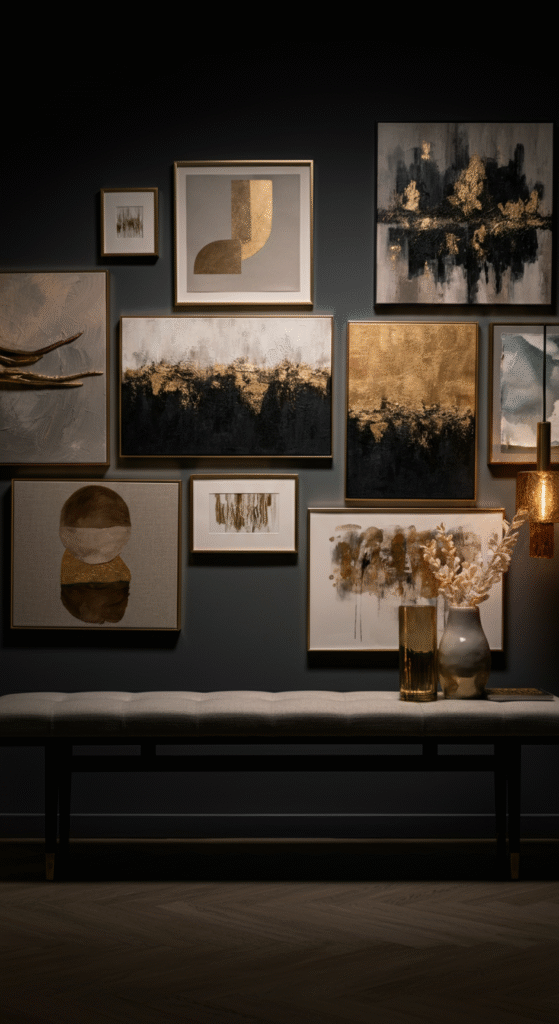
If you love an organic, free-spirited vibe, the organic layout may be your go-to choice. This style involves creating an arrangement that flows naturally, with artwork placed at varied distances from one another in a casual yet harmonious fashion.
The beauty of this layout lies in its unpredictability – no two organic gallery walls are alike. It allows you to mix different frames, artworks, and even unconventional items, such as mirrors or small shelves, to make your living room feel unique.
9. The Horizontal Layout: Expansive and Open

For those with large walls or wide living rooms, a horizontal layout can help fill the space beautifully. This layout arranges artwork in a wide, continuous line that stretches horizontally across the wall.
This arrangement creates a sense of openness and gives the room a sense of balance, making it ideal for expansive walls or rooms with lower ceilings.
10. The Vertical Layout: Drawing the Eye Upward
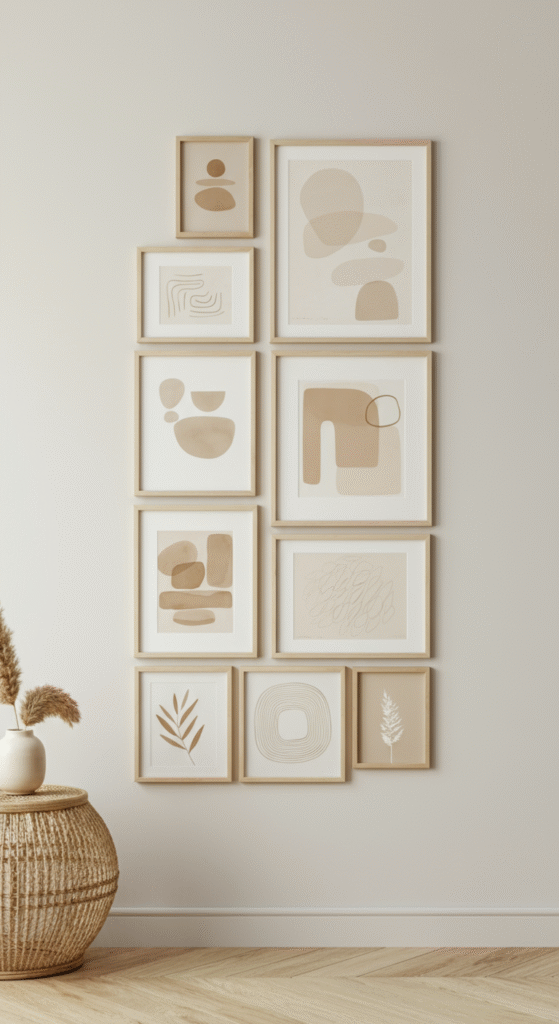
Conversely, the vertical layout is ideal for narrow walls or rooms with high ceilings. This layout involves arranging artwork in a vertical column, extending upwards to make the most of the wall’s height.
A vertical gallery wall elongates the space and can help balance out more cramped or smaller rooms, making them feel larger and more open. This layout is a great way to draw the eye upward and create a more dynamic atmosphere.
11. The Circular Layout: Bringing Harmony and Flow
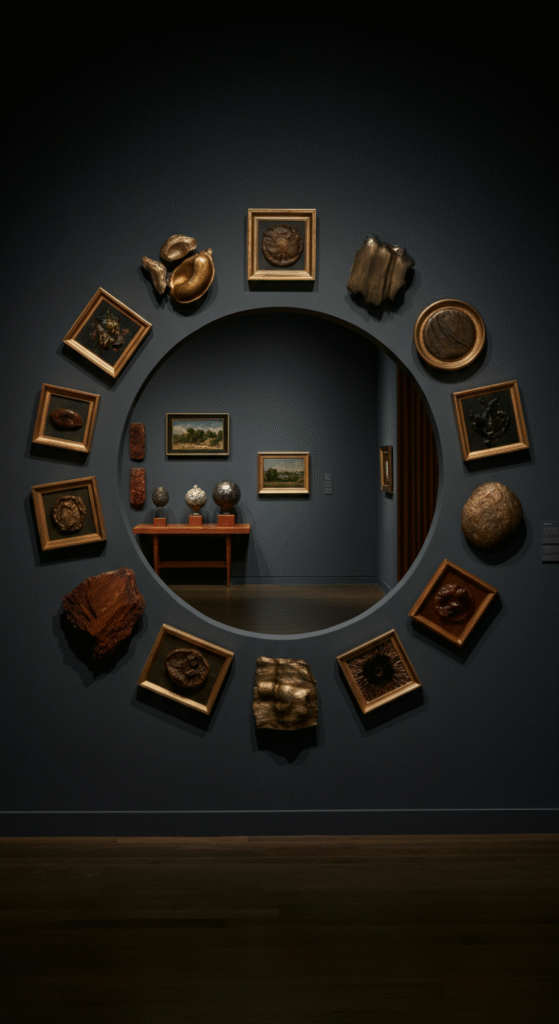
If you’re looking for something truly unique, the circular gallery wall layout could be the answer. In this design, the artwork is arranged in a round formation, creating a striking focal point that feels balanced and harmonious.
This arrangement is perfect for a living room with a circular or rounded shape. It gives your room a cohesive feel while adding an element of surprise and creativity to your decor.
12. The Mixed Media Layout: For the Artistic Soul
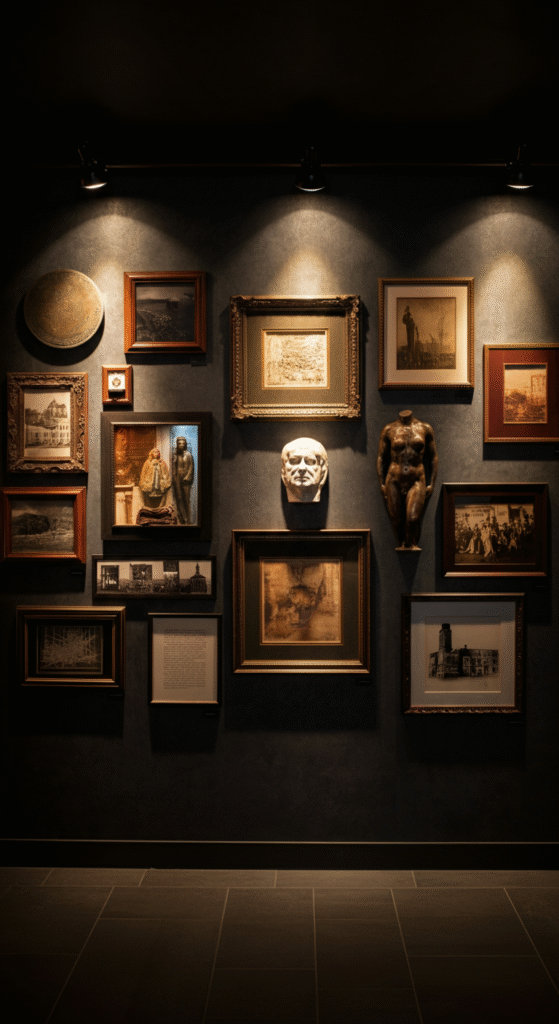
Gallery walls don’t always have to be limited to just paintings and prints. A mixed media layout involves combining different art forms, such as photography, paintings, textiles, or even sculptures, in one cohesive design.
This type of layout brings a dynamic and creative flair to your living room. It’s the perfect way to express your artistic side and create a truly one-of-a-kind feature wall that feels personalized and unique.
13. The Vintage Layout: Nostalgic and Charming
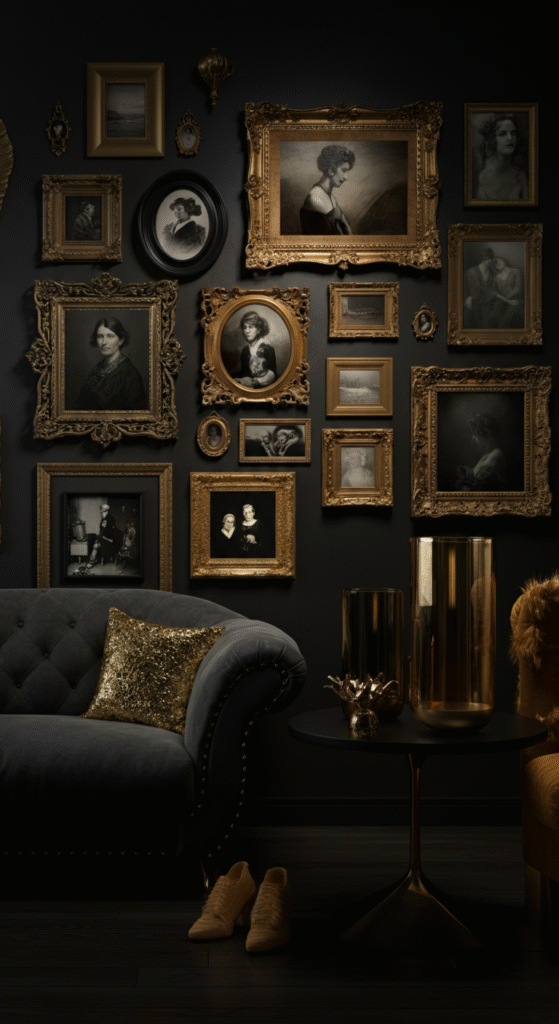
If you have a collection of vintage or heirloom pieces, why not create a gallery wall that evokes nostalgia and charm? The vintage layout involves pairing antique artwork, black-and-white photos, and classic frames to give your living room a timeless, warm atmosphere.
This layout is especially suitable for those who appreciate history and enjoy incorporating heirloom or antique pieces into their modern homes.
14. The One-Sided Layout: Bold and Minimalist
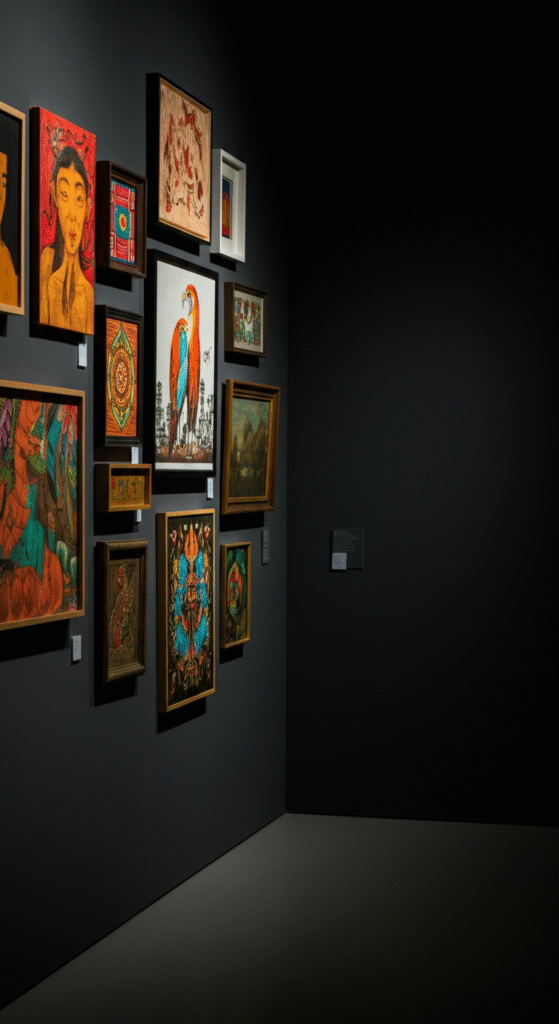
For a minimalist approach, the one-sided layout is an ideal choice. This layout focuses on placing artwork along one side of the wall, leaving the other side empty or with minimal decoration.
This design creates a striking, asymmetrical effect, offering a contemporary and sleek look that makes a strong statement. It’s a great choice for those who want a more understated, yet still impactful, gallery wall.
15. The Collage Layout: A Fun and Eclectic Mix
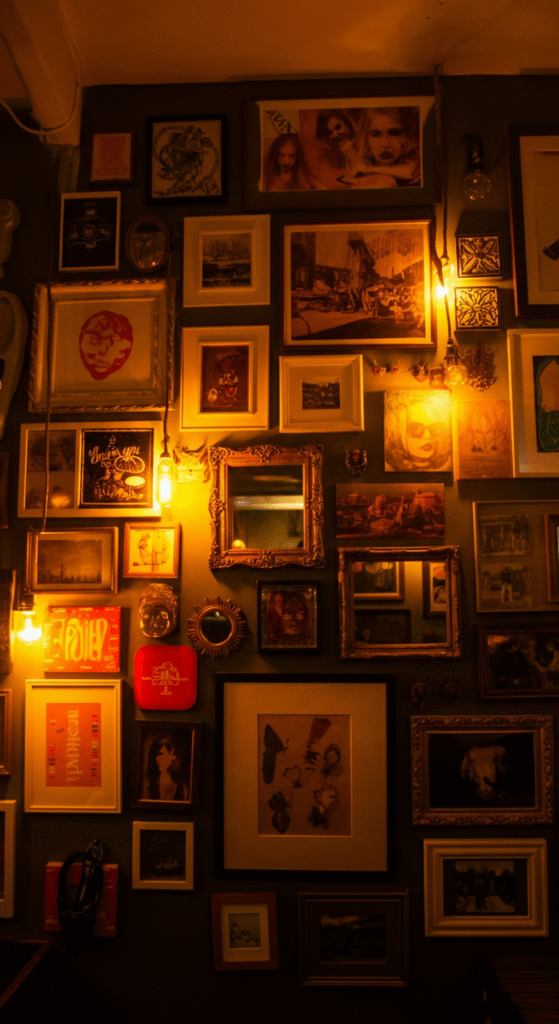
Finally, the collage layout is the most playful and eclectic of all. Here, you can mix and match different sizes, colors, and styles of artwork, photos, and decorative items to create a fun, personalized display.
This arrangement doesn’t follow any set rules, so it’s perfect for those who want to experiment with different textures and colors. It’s an excellent choice for creating a truly unique, one-of-a-kind living room gallery wall that speaks to your personality and style.
Final Thoughts:
No matter which gallery wall layout you choose, remember that it’s all about showcasing your personality and creating a space that feels uniquely yours.
Whether you prefer something structured and symmetrical or free-spirited and organic, there’s a layout that will transform your living room into a statement-making space.
Gallery walls allow you to tell a story with your artwork, creating a focal point in the room that will grab attention and spark conversation. So, get creative and start experimenting with these 15 gallery wall layouts to design the perfect living room that truly reflects your style!
Frequently Asked Questions (FAQs)
What size should my gallery wall be for a living room?
The size of your gallery wall depends on the available wall space and the effect you want to achieve. For a balanced look, make sure the gallery wall covers around two-thirds to three-quarters of the wall space. However, if you have a smaller living room, a more compact gallery wall can also create a striking impact. Measure your wall before starting the arrangement to ensure your pieces are proportionate to the space.
Can I mix different frame styles in my gallery wall?
Absolutely! Mixing different frame styles is a great way to create a more personalized and eclectic look. While matching frames can offer a more uniform and structured vibe, mixing frames of different shapes, materials, and finishes can add an exciting contrast to the wall. Just ensure that the artwork itself maintains a sense of harmony in terms of color and theme to keep the layout cohesive.
How do I arrange my artwork on the wall before hanging it?
Before you start drilling holes into the wall, lay your artwork out on the floor to experiment with different arrangements. You can use painter’s tape to create a temporary outline on the wall or cut out paper templates to simulate the artwork’s sizes. This will help you visualize how the pieces will look before committing to the final placement.
How far apart should the frames be in a gallery wall layout?
The ideal spacing between frames typically ranges from 2 to 4 inches. This distance creates a sense of unity and ensures the pieces don’t look too scattered or too close together. If you’re going for a more relaxed or organic layout, you can vary the spacing, but aim for consistency throughout the arrangement to maintain visual harmony.
Can I use non-art elements in my gallery wall?
Yes! Your gallery wall can incorporate a variety of non-art elements, such as mirrors, clocks, or even shelves with small decor items like plants, books, or sculptures. Mixing different types of objects adds texture and depth to the display, creating an interesting and dynamic visual experience.
